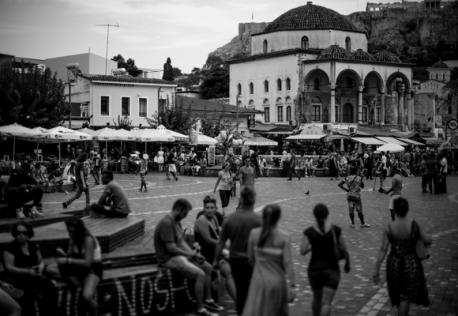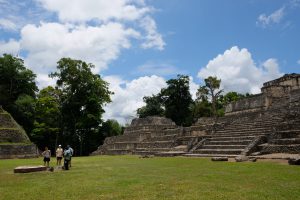
Image credit: Paolo Gamba
Amelia Duggan learns about the rituals and history of Greek coffee in one of Athens’ oldest cafes
Kafeneio 111 has stood near the western end of Ermou Street in Athens for 100 years, serving thick, aromatic coffee to downtown labourers through periods of both stability and upheaval. Today, traffic hurtles past the neoclassical facade – one of many elegant and gently crumbling anachronisms that punctuate modern Athenian life – but once upon a time the wood-panelled bar and its leafy veranda graced a more languid thoroughfare.
While the district may have changed – factories turned into flats, street vendors replaced by antiques stalls – this coffee shop remains a window into history. Diana, my host, explains that little has changed, especially our drink.
We’re sitting on simple furniture on an uneven cobbled patio outside the front door, the timber painted sky blue. Overhead, there’s a decorative iron balcony and a rose-painted sign with angular Greek script.
Besides Diana, there are few other women here; the city’s coffee shops were traditionally where men came to shoot the breeze and do business and, for the moment at least, the tables are still mostly occupied by heavyset, open-shirted men.
“Coffee came with the Turkish occupation,” she explains, telling the waitress we’d like ours metrios – equal parts coffee and sugar, no milk. “The style is essentially Arabic: home-roasted, slow-brewed and weak, but dense and fragranced with a hint of spice. But it’s definitely Greek coffee,” she says with a wink.
It arrives in espresso cups alongside tall glasses of iced water. It’s thicker than I expected and bitter, granules slide over my tongue. I wonder how many sticks of chewing gum I have left in my purse.
From nowhere, she brandishes an open copper pot shaped like an hourglass. I almost upset my cup. “Let me tell you how we make it,” she says. The coffee, water and sugar is simmered over a low heat – a stoked fire in the case of the early nomads of the Eastern deserts; a gas burner for modern Greeks – in this shapely briki pot until foam forms. “We call this kaimaki,” Diana says with hushed reverence. “When you see the foam rising, it’s ready to pour.”
Diana continues to ruminate on the importance of the lengthy coffee-making ritual in Greek society, but I’m distracted by the contents of my cup. The bottom half of my drink appears to be solid. Not wanting to offend my host, I smile politely and raise my cup.
“That’s sediment! Not for drinking!” she exclaims, just in time to stop the slow avalanche of damp coffee grounds reaching my lips.
Dispelling the awkwardness, she offers to read my fortune from these dregs. “I don’t really know how to do this,” she says with a laugh, tipping out the sludge onto her saucer and inspecting the remains. “I think old women look for animals or letters. These trails down the side, perhaps they are roads. Are you going on a journey?”
To meet Diana and take a 10-stop food tour of Athens, visit alternative-athens.com
For more information on Greece, go to visitgreece.gr











